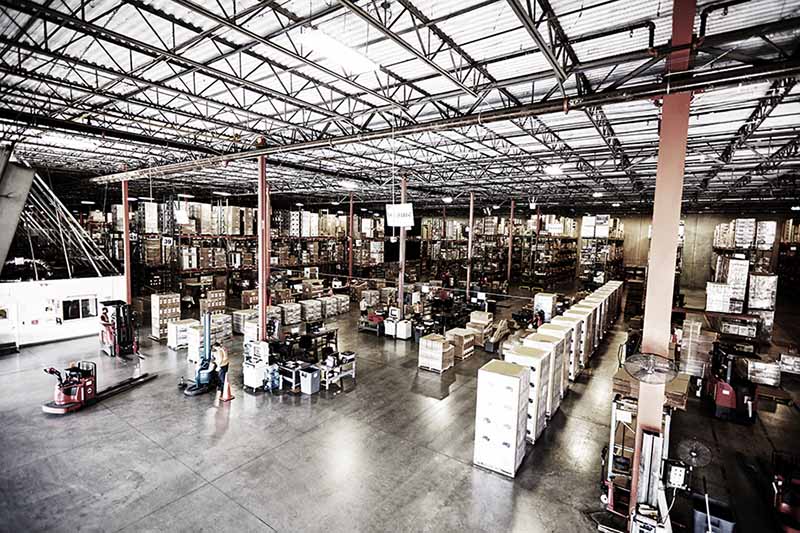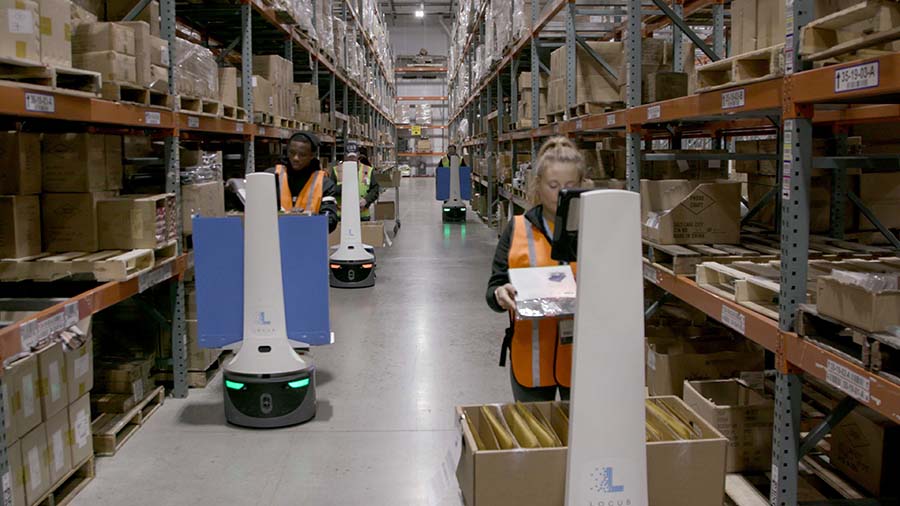In the next decade, distributors are going to see large developments in the areas of robotics, Internet of Things technologies, and intelligent warehouses. Much of that technology is already here, and distributors ready to take advantage of today’s tech will witness improved efficiency, happier customers, and fewer headaches from trying to find enough workers.
Distribution, Analytics, and the Internet of Things
Alec Hicks, Ryder group director of solutions design, said that one important aspect of today’s smart warehouse is the company’s ability to visualize data. He explained that operations, engineering, and financial leaders need the ability to view the performance of warehousing operation within the supply chain. Building intelligence (BI) and analytics allow this visibly.
“You’re able to view demand in the form of orders, capacities in the form of labor and equipment, and orchestrate it in a way that that ensures that you're making your service obligations at the lowest possible cost,” he said.
Hicks explained that this technology can be something as simple as building a dashboard and analytics program so that customers can use the information about their orders to make strategic decisions.

ANALYTICS: Alec Hicks, Ryder group director of solutions design, said that a connected warehouse, linking the supply chain from start to finish, allows stakeholders to make the best management decisions.
“Communicate the information in a way that is of use to the consumer so they can make the right decision when it needs to be made,” he said. Hicks gave the example of RyderShare, which connects all of those in the supply chain and share data with stakeholders.
Smart warehousing also involves wearable augmentation technology and Internet of Things (IoT) technology. Workers can use a voice headset to receive instructions, or use visual clues through smart glasses that tell the worker what task they should complete next.
“Within the warehouse system, there's a lot of work on IoT solutions, where sensors of one type or another can measure or monitor where the inventory is and what the associates are doing,” Hicks said. These sensors can connect to the analytics programs to optimize the solutions within the warehouse. He explained that the smart technologies are in varying degrees of readiness, depending on the application (some widely used, some being deployed, etc.).
Hicks explained that the future of warehousing technology is very exciting to him, but users should be aware of risks associated with the rapid acceleration of warehousing technology.
“There’s value in being thoughtful and making sure that you understand the needs of your operation, and the maturity of the technology that you're looking to deploy to make sure that that you're going to get a solution that is going to deliver the value that you need,” Hicks said. He explained that anyone interested in introducing a new technology to their warehouse should pilot the product first to ensure it will work as planned.
Smart Warehousing and the Labor Shortage
Kary Zate, director of marketing for Locus Robotics, said that smart warehousing technology will help distributors deal with the labor shortage. He explained that distributors are finding it increasingly challenging to find labor that can keep up with demand. Especially with the rise of e-commerce sales, warehouses are changing the way they operate and requiring even more workers to function at the most profitable capacity.

LABOR SHORTAGE: Kary Zate from Locus Robotics said that automated machines can help improve an employee’s efficiency, making it easier to fill orders with the employees a company already has.
“At some point, you reach this critical mass where you get no more return by putting more people into the equation,” he said. “That's where automation comes into play, particularly robotic automation, because warehouses are such a dynamic environment.”
Zate said that a fully automated warehouse — without employees — is a very long way away. There are enough employees to keep warehouses operating, and humans still outmatch robotics in tasks such as picking and pallet-stacking. Instead, robots are currently designed to come alongside distribution workers and allow them to be more productive. Such a design allows employers to better weather surges in volume or seasonal fluctuations in demand, since the addition of more robots adds for quick and flexible scaling that the company wouldn’t have with just employees.
This flexibility also helps with retaining labor, Zate said. Because of logistical issues, warehouses tend to be clustered together and compete over the same workers, and this competition can lead to signing bonuses and other perks. Employees who realize this competition will happily move warehouses repeatedly for incremental salary increases if they will be doing a similar job.
“When you start adding in a tool like robotics, like our tracking system, you make their job easier in the long run,” said Zate. “That $1 isn't significant enough for them to leave. A lot of them specifically want to work with robots because they're walking less and lifting less. So it's allowing employers to retain those workers versus having to compete with somebody for an extra dollar or two down the road per hour.”
One such robot, from Locus, goes into the warehouse with the worker, and the employee can give work to the robot (such as transporting a box to a packing location).
In addition to this, robots allow warehouse owners to better study the specifics of how the distribution center is operating — how fast picks are being completed, which employees are picking the most effectively — aiding management of the center.
“When you combine this technology into a WMS (Warehouse Management System), or interface with those types of systems,” he said, “you give management the ability to look at what's going on in their operation and have real quantifiable information that they can use to make significant management decisions.”
Intelligent Solutions (of Various Sizes)
Mark Jensen, senior director of product management at Epicor, said that as warehouses transform with new technology, distributors are looking to do more with less people through the use of intelligent solutions of various sizes.
He explained that these solutions utilize IoT technology, such as smartphones and tablets that are able to track the products on hand and in bins, aiding with inventory management. He has seen some distributors install small push buttons next to bins (with glue or fabric fastener) so that workers can log when a bin is emptied.
“We're going to see a lot more Internet of Things devices to track the movements of people and equipment. It will help optimize workflow within the warehouse,” Jensen said. “That's the kind of the future we’re going towards.”
Jensen also added that people can use voice technology through apps on their smart phones, asking the application about a specific product and getting inventory data. This prevents managers from having to walk through a warehouse and write down notes on a piece of paper, or having to call someone to check if a product is in stock.
He explained that all of these changes improve the efficiency of managing large volumes of product. Having a managed warehouse, with regular updating technology through IoT devices, informs the company about when products need to be ordered, and whether a specific order can be filled without needing to restock. It also allows distributors to communicate with customers better in a world of e-commerce.
“You’re able to show customers what product is available, how much there is, and when it could be shipped to them,” he said. Plus, as delivery becomes more common for distributors, a system that links delivery with the inventory is incredibly beneficial.
“I need to have an online system that allows me to be able to manage the deliveries,” he said. “I need mobile devices in the hands of the delivery truck drivers. I want to be able to have up-to-the-minute notifications for the customers to let them know when the product is going to arrive.”
There is a lot of technology, Hicks acknowledged, and he recommended that distributors interested in implementing it start small.
“Find that one thing that is going to have a sizable impact,” he said. “It doesn't have be the biggest impact, because there's also time and money involved with implementing it. Get your first success with something that's not going to be large and overwhelm the company.”
He explained that he has seen some people begin their move to an e-commerce system with something as small as customer self-service, allowing customers to inquire about their invoices or open orders, or request a quote.
“That's a good start,” he said. “That's a way for customers to be able to connect with you and get information from you when they can't come into your office or your salespeople can't go and visit them.”








